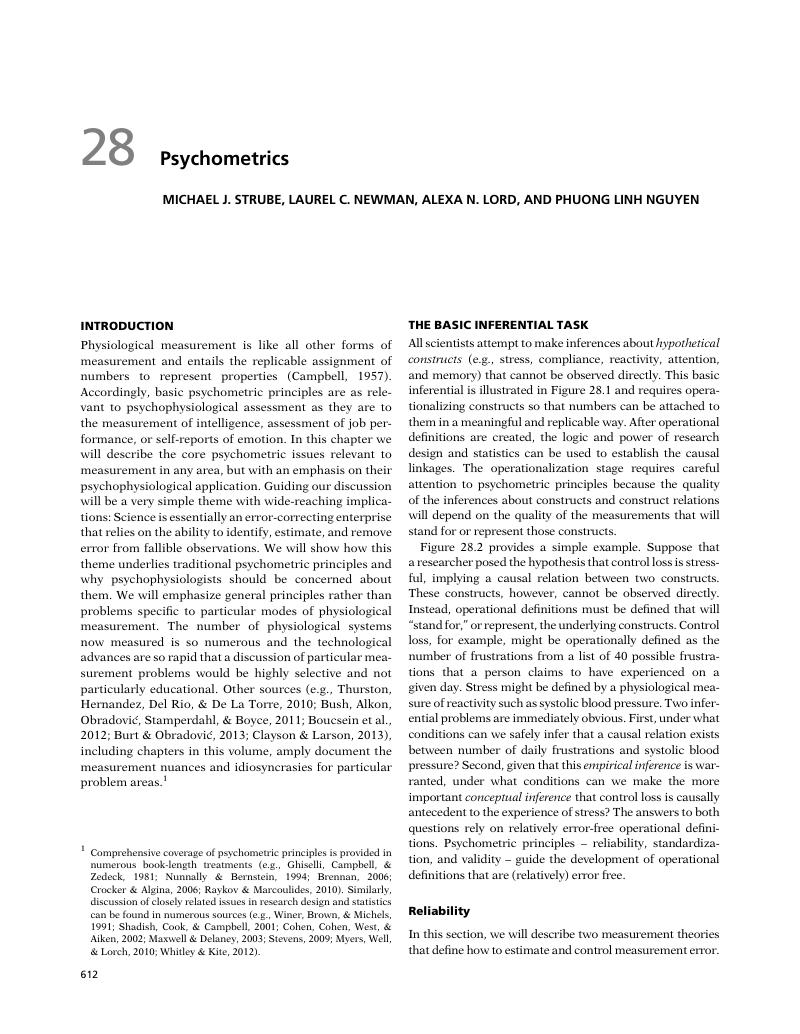Book contents
- Handbook of Psychophysiology, Fourth Edition
- Handbook of Psychophysiology
- Copyright page
- Contents
- Figures
- Plates
- Tables
- Contributors
- Foundations
- Systemic Psychophysiology
- Topical Psychophysiology
- General Methods
- 27 Methodology
- 28 Psychometrics
- 29 Biosignal Processing in Psychophysiology: Principles and Current Developments
- 30 Multilevel Modeling
- 31 Visualizing Scientific Data
- Index
- Plate section (PDF only)
- References
28 - Psychometrics
from General Methods
Published online by Cambridge University Press: 27 January 2017
- Handbook of Psychophysiology, Fourth Edition
- Handbook of Psychophysiology
- Copyright page
- Contents
- Figures
- Plates
- Tables
- Contributors
- Foundations
- Systemic Psychophysiology
- Topical Psychophysiology
- General Methods
- 27 Methodology
- 28 Psychometrics
- 29 Biosignal Processing in Psychophysiology: Principles and Current Developments
- 30 Multilevel Modeling
- 31 Visualizing Scientific Data
- Index
- Plate section (PDF only)
- References
Summary

- Type
- Chapter
- Information
- Handbook of Psychophysiology , pp. 612 - 627Publisher: Cambridge University PressPrint publication year: 2016



